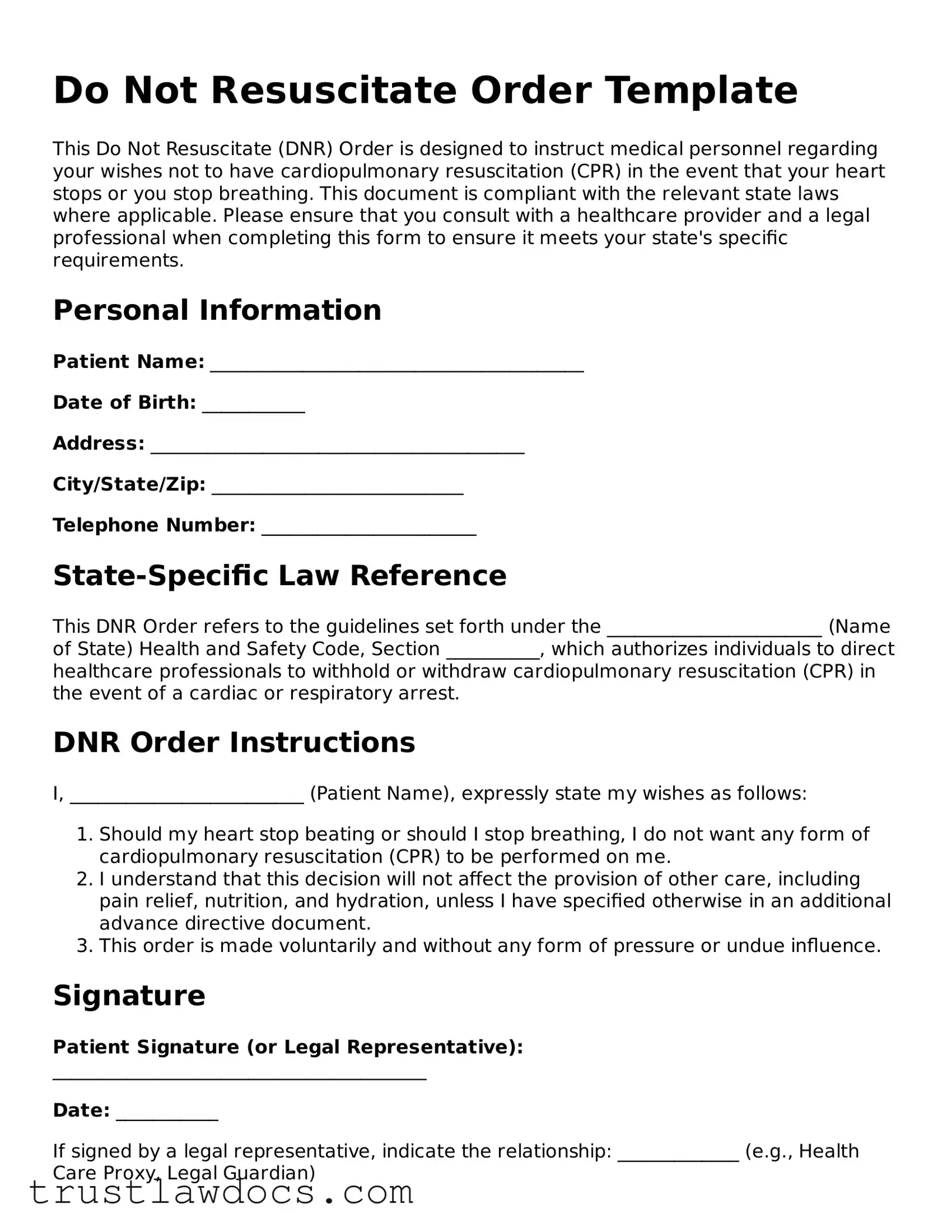Filling out a Do Not Resuscitate (DNR) Order is a crucial step for individuals who wish to have their end-of-life medical wishes known. However, several common mistakes can undermine the effectiveness of these forms. Recognizing and avoiding these errors is essential for ensuring that the individual's preferences are honored.
One common mistake is neglecting to discuss the DNR order with family members and healthcare providers. This communication is vital to ensure that everyone involved understands the individual's wishes. When these conversations don't happen, it can lead to confusion and potential disputes among family members and medical personnel at critical moments.
Another error involves not having the DNR order signed by the required parties. Typically, this includes the individual for whom the DNR applies and their physician. Without these critical signatures, the document may not be considered valid, which could lead to unwanted medical interventions.
Some people mistakenly believe that a DNR order is included in a standard will or advanced directive without explicitly stating so. A DNR order is a separate document that needs specific mention and must be properly integrated with other estate planning documents to ensure wishes are clearly defined and legally recognized.
Failing to renew or update the DNR order as needed is another oversight. Changes in health condition, medical advancements, or personal preferences may necessitate modifications to the order. Regular reviews with healthcare providers ensure the DNR order reflects the current wishes and medical circumstances of the individual.
Incorrect filing of the DNR order can also pose a significant problem. If the document is not easily accessible, especially in an emergency, it may not be followed. Ensuring the DNR order is on file with one's physician, in addition to having copies in easily accessible places at home, can avoid this pitfall.
Many people also fail to carry a wallet card or wear some form of identification that alerts first responders to the presence of a DNR order. In emergencies outside the home, this can lead to unnecessary resuscitation efforts, contrary to the individual's wishes.
Choosing the wrong type of DNR order for one's specific situation can also lead to unwanted outcomes. Some states offer different forms for in-hospital and out-of-hospital situations. Not understanding the distinctions and choosing incorrectly can mean your wishes are not honored in the setting where you find yourself.
Lastly, assuming all states recognize a DNR order in the same way is a mistake. Legal requirements and recognition can vary significantly from one state to another. It’s important for individuals to ensure their DNR orders comply with the specific laws of their state or any state they may be traveling to.
Avoiding these mistakes requires careful preparation, discussion, and consultation with legal and medical professionals. Taking these steps helps ensure that a DNR order will be effective and that an individual's end-of-life wishes will be respected.
